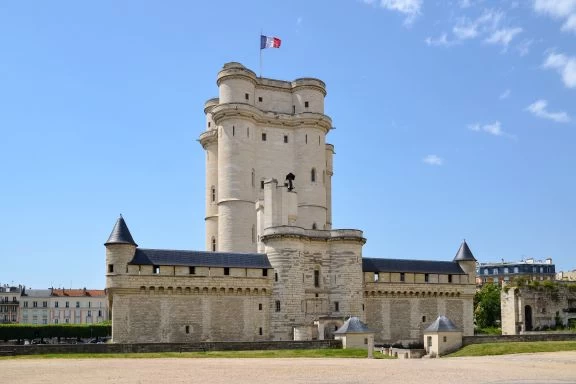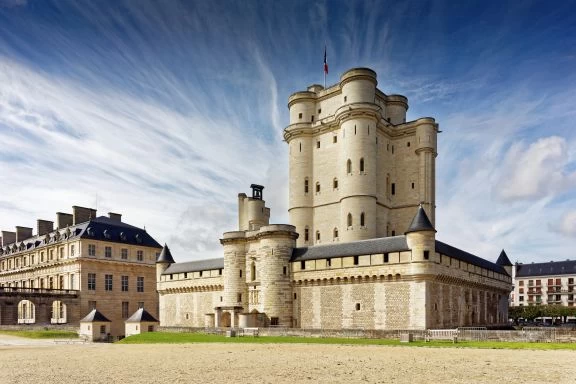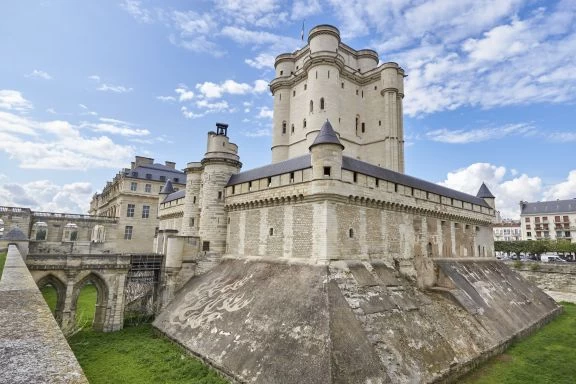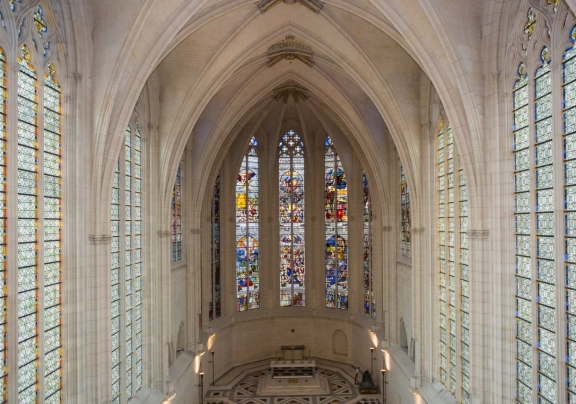Panoramica:
Alla periferia orientale di Parigi, vicino alla città di Vincennes e al Bois de Vincennes, esplorate l'ex fortezza e dimora reale nota come Château de Vincennes. La maggior parte della sua costruzione è avvenuta tra il 1361 e il 1369 e dal XIV al XVI secolo è stato il palazzo preferito dai re francesi, secondo solo al Palais de la Cité. Scoprite l'affascinante passato di questa straordinaria struttura, che servì come prigione prima di diventare una caserma e un arsenale durante l'epoca napoleonica.
Punti salienti
- Visitate il famoso Château de Vincennes e lasciatevi affascinare dal classico edificio medievale completamente bianco che testimonia il suo antico status di palazzo reale.
- Esplorate le alte torri e le prigioni, che servivano a fortificare il castello durante le battaglie, e passeggiate per i suoi corridoi storici.
- Scoprite il torrione medievale ben conservato, la torre fortificata più alta d'Europa con i suoi 52 metri, dove morì il re Enrico V e dove furono rinchiusi Fouquet, il marchese de Sade e Mirabeau.
- Scoprite l'impressionante sfarzo esterno dell'edificio gotico e il bellissimo rosone della Sainte Chapelle de Vincennes.




There is a Sainte Chapelle here too. It is the centrepiece of the courtyard of the castle. It's much simpler than Sainte Chapelle on L'Ile de la Cite but nevertheless it's very beautiful in quite a stark manner. Go up to the musicians gallery and check out the scraffiti incised into the stone rail. Bored nobles back in the day? It is a true castle - there's even a moat - and it is fortified with very serious walls! There is a classic donjon which you can explore from top to bottom and you can walk right round the covered walkway - there's graffiti both old and new there, including legitimate graffiti areas where you can leave your mark. Down the back of the central castle area are the Kings apartments which now provide temporary exhibition space. There was a military history exhibition there when I had visited and there had been a big antiques fair there the previous week, just being packed up. There were parties of excited school children who looked as though they were really enjoying their visit and I noted an extensive education centre and workshops in the middle courtyard. It is pretty clear that this is no simple tourist attraction but is a living and important part of the local community to this very day. It's a bit out of the way but easy to get to on the Metro and it's right in the middle of Vincennes with the Metro station just across the road. No need for a skip the line ticket. Versailles this ain't.
The Chateau Vincennes is located at the end of the Metro line. The entrance is only a hundred yards from the station exit. The Chateau was the residence and "office" of Charles V in the 14th century and is very well preserved. It remained the royal residence until Versailles was built by Louis XIV in the 17th century. Included in the complex are a Sainte-Chapelle modelled on the one in Paris Ile-de-la-Cite. The audio tour is excellent and the keep is especially fascinating with the security it provided for the monarch and his staff. You should allow about half a day to get there and tour the Castle. There are many shops and cafes immediately outside the entrance.
More than an impressive and well maintained medieval building, the Château de Vincennes served as a fort and has the largest fortified tower still preserved in France. In its interior is a chapel of XVI century, also of impressive proportions. The visit to the inner area is free. Access to the interior of the castle and the chapel is paid at a small fee.